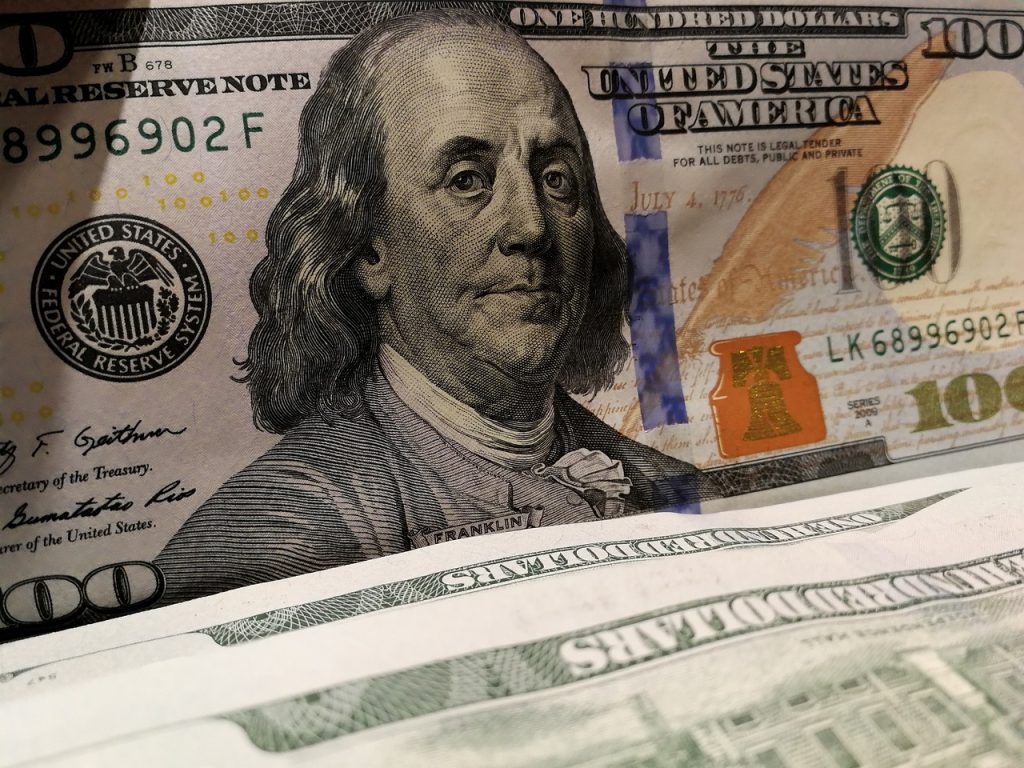
CPI Report: US inflation, returning to normal levels

Inflation takes a downturn:
On Tuesday, the Bureau of Labor Statistics released data indicating a departure from the recent high inflation levels as consumer prices in May experienced the slowest annual increase since March 2021. The data suggests that the CPI (Consumer Price Index) Report reported a downward turn in US inflation, returning to normal levels. The CPI, which measures price fluctuations for a range of goods and services, rose by 4% for the year ending in May. Economists had anticipated a 4.1% gain, but the figure represents a significant decline from April’s 4.9% increase. Moreover, prices only rose by 0.1% on a monthly basis, falling short of the expected 0.2% increase from April to May.
The persistently high levels experienced over the past two years have made this 11th consecutive month of decelerating inflation a much-needed relief. The Consumer Price Index more than halved, reaching 8.6% compared to the same period last year. Nancy Vanden Houten, lead US economist at Oxford Economics, describes this as a positive step in the right direction.
The decline in energy prices and the slowdown in the rise of food prices caused the overall decrease in the headline inflation figure. Another factor was the impact of what economists refer to as base effects: inflation rates rapidly increased a year ago, reaching a peak of 9.1% in June before trending downward.
While the current inflation rate of 4% is significantly lower than 9.1%, it still surpasses the desired inflation target of 2% set by the Federal Reserve. The Federal Reserve has been implementing a historic monetary tightening campaign since March 2022. Chris Zaccarelli, the chief investment officer for Independent Advisor Alliance, states that inflation remains unacceptably high but acknowledges the positive trend and the Fed’s intention to pause interest rate hikes to assess the effectiveness of their actions.
The commencement of the Federal Reserve officials’ monetary policymaking meeting coincides with the release of the Consumer Price Index report. It serves as one of the last major economic data points to be considered before the rate decision announcement on Wednesday. According to CME FedWatch, there is a 95.3% probability that the Fed will pause its rate hikes, as indicated by current market expectations.
Regarding inflation drivers, cars and rent have played significant roles, at least for now. On an annual basis, food inflation continued to decline, although there was a slight increase in grocery and food away-from-home prices in May, by 0.1% and 0.5%, respectively. Notably, egg prices experienced a substantial monthly drop of 13.8% in April, marking the largest decline in this category since 1951. Consequently, egg prices are now lower compared to last year.
When excluding the more volatile components of food and energy, the core Consumer Price Index showed an annual increase of 5.3%, slightly lower than April’s figure. On a monthly basis, the core index rose by 0.4%, in line with economists’ expectations. BLS data indicates that price increases in categories such as shelter and used cars, as well as services excluding rent, have influenced underlying inflation as well as the overall inflation rate. However, economists anticipate considerable easing in the near future for the first two categories.
CPI calculations assign substantial weight to shelter, which primarily measures rental leases and the implicit rental value of owner-occupied properties. However, due to infrequent data collection and changes in lease rates, the effects of shelter inflation lag behind. Recent data suggests a slowdown in rent and new lease costs, which could lead to a reduction in annual shelter inflation in the coming year, according to Federal Reserve Bank of Richmond researchers. Additionally, wholesale used car prices have shown signs of cooling down in recent months, indicating a potential decline in consumer car prices in the upcoming months.
The services category, excluding housing, revealed a small improvement, with a 0.2% monthly decline and a 4.2% annual decrease in inflation. Inflation within this category has been a persistent concern, as it has the potential to be long-lasting. The higher weighting of labor costs in services than goods makes the tight labor market and wage increases significant contributors to sustained inflation. While studies indicate that wage growth does not directly cause inflation, economists remain cautious about the potential demand-side pressures resulting from a strong labor market and resilient consumer spending.
Insights on Economic Trends: Wage Pressures, Inflation, and Recession Predictions in the United States
Kurt Rankin, a senior economist for PNC Financial Services, highlights two significant trends in the current economic landscape. First, there has been a notable increase of 5.8% in annual food away-from-home price inflation. This rise in prices indicates growing expenses for consumers when dining out or purchasing meals outside the home. Second, there has been a slowdown in employment gains within the leisure and hospitality sector, which suggests that the industry is facing challenges in terms of hiring new workers.
According to Rankin, one of the main reasons behind the persistent wage growth pressures is the shortage of available labor. The scarcity of workers leads to increased competition among employers, driving up wages as they try to attract and retain employees. Additionally, with the arrival of summer, consumers tend to spend more on recreational activities, further increasing demand for food away from home. Consequently, Rankin predicts that prices in this sector will remain high as consumer expenditure rises during the summer months.
Notably, PNC economists, along with other experts, have made predictions indicating a potential mild recession in the United States later this year. The inability of inflation to reach the Federal Reserve’s target of 2% is seen as a contributing factor. Despite consistent consumer demand, inflation has not risen to the desired level. This situation may lead to the continuation of high-interest rates, which in turn could have several consequences.
First, high-interest rates are likely to result in reduced business activity. When borrowing becomes more expensive, companies may be hesitant to invest in new projects or expand their operations. This reduction in business activity can have a cascading effect on the overall economy.
Second, high-interest rates can increase costs for households carrying high-interest debt, such as credit card balances or loans. The burden of interest payments may limit consumers’ ability to spend on discretionary items or make major purchases. As a result, overall consumption levels may begin to decline.
The combination of these factors—slower business activity and reduced consumer spending—can create a slowdown in the economy, often a precursor to a recession in the United States. It is important to monitor these indicators and trends closely to assess the potential impact on the broader economic landscape.














